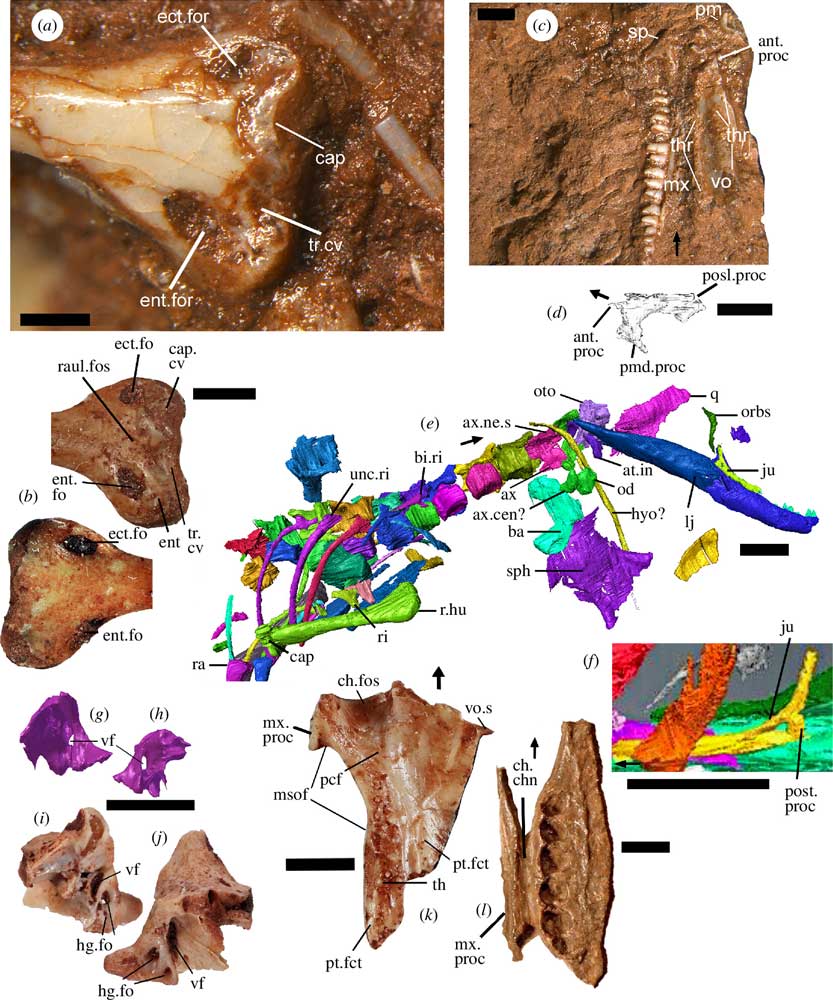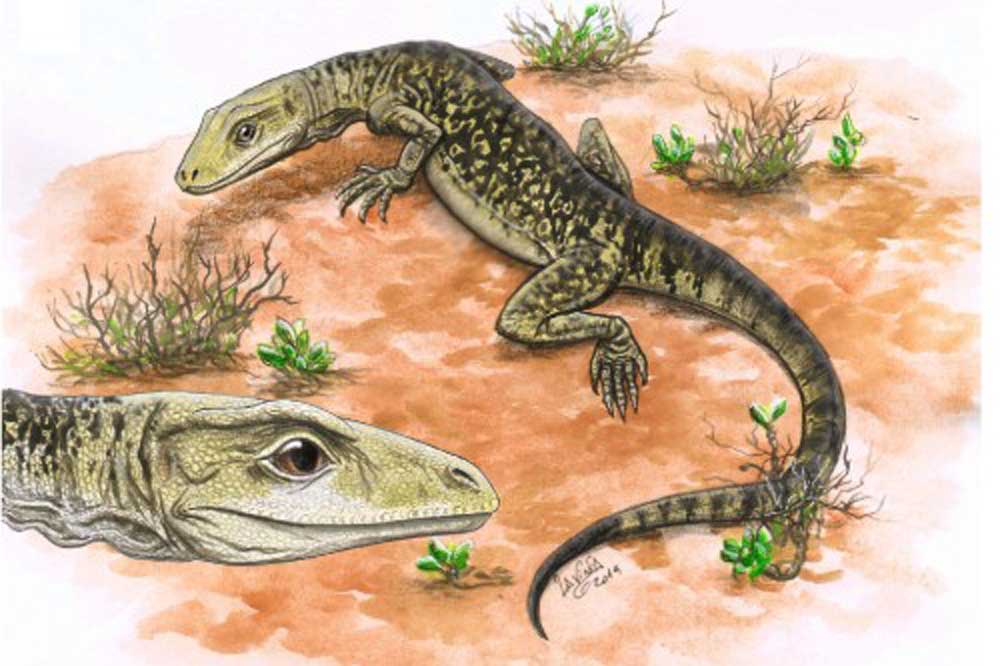"We ran the analysis time after time, and it gave our original result, that the little Bristol reptile is indeed the world's oldest modern-type lizard.”
Cryptovaranoides microlanius, or the small butcher, is actually the oldest modern-type lizard, according to the researchers who described the species in 2022. Cryptovaranoides microlanius was left languishing in cupboard at the Natural History Museum since the 1950s until Dr. David Whiteside of the University of Bristol’s School of Earth Sciences found the specimen in a cupboard full of Clevosaurus fossils at the museum.
Dr. Whiteside and colleagues wrote a research paper describing the species in 2022, but as with many things science, their conclusions were questioned by others in academia, which spurred Whiteside and his colleagues to reexamine the data that they originally published just two years ago. Those questioning the original paper claimed that Cryptovaranoides microlanius was not a lizard or even a lizard relative but was an archosauromorph, animals that were more closely related to crocodilians and dinosaurs.
So Whiteside and his colleagues checked their original work and the questions claiming that Cryptovaranoides microlanius was not a lizard or even a lizard relative. What they found in checking the data again as well as the original specimens and x-ray scans of the specimen hidden in rock, was that the lizard is indeed the world’s oldest known modern-type lizard. They reexamined all anatomical features, including the skull and skeleton and confirmed that the little butcher was indeed within Squamata and closer to Anguimorpha, which are modern day anguids and monitor lizards. In addition, the discovery shifted the origin of the Squamata group back by 35 million years.

Figure 1. Images from the holotype NHMUK PV R36822 of C. microlanius, separate isolated bones referable to the taxon and a palatine of †Tanystropheus longobardicus for comparison. (a) Distal end of left humerus in anterior view exposed on the surface of the holotype rock showing an ectepicondylar and an entepicondylar foramen and the capitellum. (b) NHMUK PV 38911 isolated larger specimen of the distal end of left humerus of †Cryptovaranoides microlanius in (above) anterior and (below) posterior views showing similar features except the condyle of the capitellum. (c) Right maxilla, right vomer in ventral view, right septomaxilla in dorsal view and both premaxillae exposed on the surface of the holotype rock. (d) Scan of right septomaxilla in posteromedial view. (e) Scan of NHMUK PV R36822, mainly in ventral view, showing right lower jaw, orbitosphenoid, right jugal, right quadrate, basioccipital, sphenoid, anterior vertebrae and ribs as well as pectoral and forelimb bones. (f) Scan of left jugal in lateral view for comparison. (g,h) Fragment of right otoccipital from scan of NHMUK PV R36822 showing position of vagus foramen, in (g) medial and (h) lateral views. (i,j) NHMUK PV 38889, fragment of left exoccipital part of otoccipital in (i) lateral and (j) medial views, annotated to show vagus foramen. (k) Isolated right palatine NHMUK PV R 38916 of †Cryptovaranoides microlanius in ventral view, showing extent of the choanal sulcus (fossa). (l) Right palatine of †Tanystropheus longobardicus PIMUZ T 2484 showing position of choanal channel. Scale bars all 2 mm except (a) = 0.5 mm and (d) = 1 mm. Arrows show anterior.ant, anterior; at, atlas; ax, axis; ba, basioccipital; bi, bicapitate; cap, capitellum; cen, centrum; ch, choana; chn, channel; cv, cavity; ect, ectepicondyle; ent, entepecondyle (entepicondylar); fct, facet; fo, foramen (foramina); for, foramen; fos, fossa; hg, hypoglossal; hu, humerus (humeral); hyo, hyoid; in, intercentrum; ju, jugal; l., left; lj, lower jaw; msof, margin of suborbital fenestra; mx, maxilla (maxillary); ne, neural; od, odontoid; orbs, orbitosphenoid; oto, otoccipital; pcf, posterior of the choanal fossa; pm, premaxilla; posl, posterolateral; post, posterior; pmd, posteromedial; proc, process; pt, pterygoid; q, quadrate; r, right; ra, radius; raul, radioulnar; ri, rib; s, spine; sp, septomaxilla; sph, sphenoid; th, tooth (teeth); thr, tooth row; tr, trochlea; unc, unicapitate; vf, vagus foramen; vo, vomer (vomerine).
“We knew our paper would be controversial,” Dr. Whiteside said in a press release put out by the University of Bristol. “But we were confident that we had looked at every possible feature and compared it with everything we could.”
“We were therefore surprised, perhaps even shocked, that in 2023 another team of academics suggested that Cryptovaranoides was not a lizard or even a lizard relative, but in fact an archosauromorph, more closely related to crocodilians and dinosaurs,” Prof. Mike Benton said in the press release. “All the details of the skull, the jaws, the teeth, and the limb bones confirm that Cryptovaranoides is a lizard, not an archosauromorph. In our new paper, we provide great detail of every criticism made and we provide more photographs of the specimen and 3D images from the scans, so everyone can check the detail.”
“We ran the analysis time after time, and it gave our original result, that the little Bristol reptile is indeed the world’s oldest modern-type lizard,” Dr. Whiteside said.
The notion that Cryptovaranoides microlanius is not the oldest will certainly continue to be debated. The complete paper dispelling the notion that Whiteside et al. were incorrect in their original research paper can be read in their updated paper “Late Triassic †Cryptovaranoides microlanius is a squamate, not an archosauromorph” on the Royal Society Open Science website.



